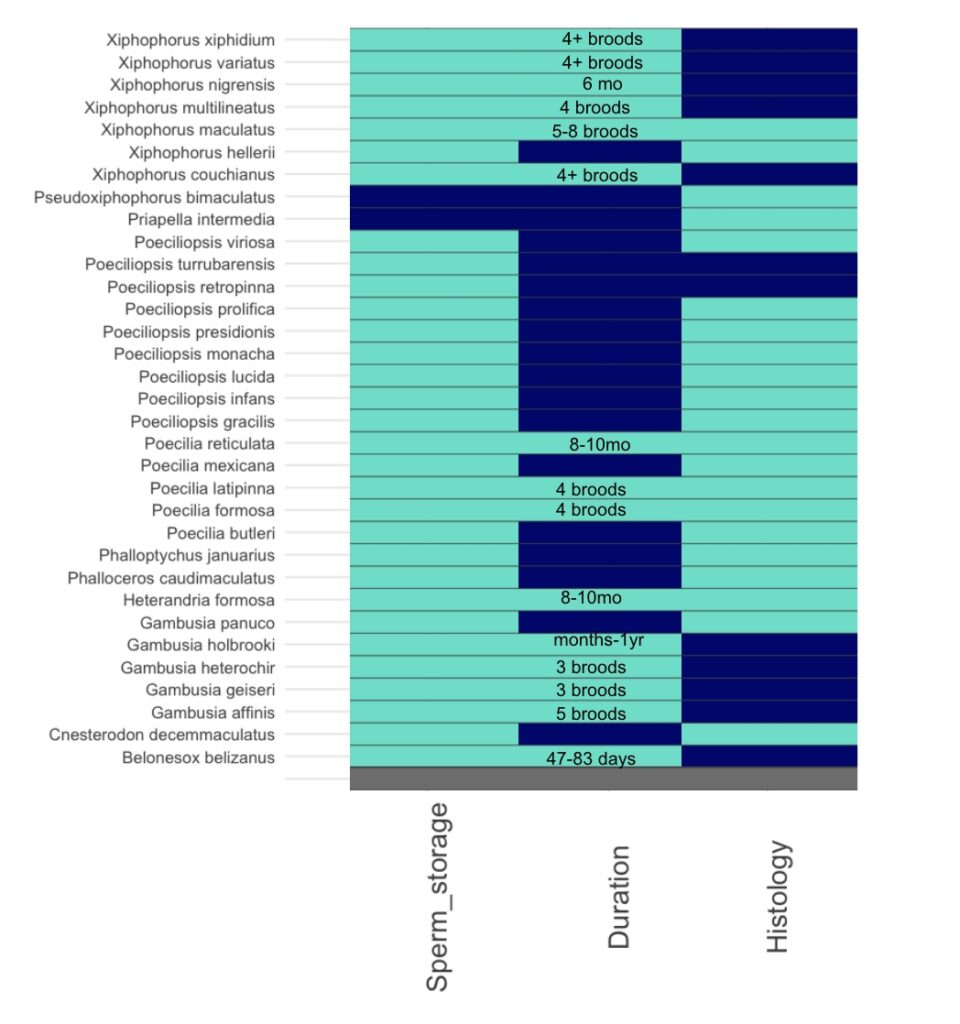All species of Poeciliidae are credited with having sperm storage, or the ability to maintain sperm in the female reproductive tract for extended periods of time. However, only 33 out of over 250+ species in the family have any documentation of sperm storage.
Sperm storage has been demonstrated in these species by either histological examination or observing the production of successive litters of offspring by isolated females (Figure 1). Histology involves the dissection, cutting, and staining of fish ovaries to visualize stored sperm. The duration of sperm storage is quantified as the maximum number of successive litters that isolated females can produce and their interbrood interval. Both of these assessments of sperm storage have shown variation among the limited number of species tested. For example, previous histological studies showed that Poecilia butleri, Pseudoxiphophorus bimaculatus, and Priapella intermedia lacked what were thought to be the necessary structures for sustaining stored sperm and otherwise had no evidence of stored sperm being present. However, we have P. butleri in our laboratory, and I found that isolated females are capable of producing multiple litters.
These contrary findings invite further questions into how sperm storage varies across the family and what patterns are associated with varying degrees of sperm storage. As a Ph.D student in David Reznick’s lab at the University of California, Riverside, I am curious about the implications of sperm storage in Poeciliidae. I plan to investigate these questions by more fully documenting which species are capable of sperm storage and what structural features of the ovaries facilitate this storage.
I seek your help in attaining these goals. I am aware that the members of various livebearer societies have access to large numbers of species. I am hoping to recruit people to help collect data on the production of successive litters of offspring from isolated females to document whether or not that species is capable of sperm storage and, if so, how long they can store sperm. I, in turn, pledge to give you all annual updates on my progress and what I have learned from other aspects of my research program.
If you are interested in participating, please fill out this interest form or email me with further questions. Thank you!

